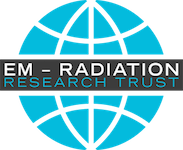June 30, 2011
‘(Updated) Could radiation from full-body scanners be responsible for a “cancer cluster” among airport security workers? That’s what Transportation Security Administration union representatives in Boston have claimed.
Now, the Washington-based Electronic Privacy Information Center (EPIC) has obtained documents from the Department of Homeland Security, which EPIC says provide evidence that the government failed to properly test the safety of full-body scanners at airports, and dismissed concerns from airport agents about excessive exposure to the machines’ radiation.
The documents, which include emails, radiation test results and radiation studies, were obtained through a Freedom of Information Act lawsuit filed by EPIC and released on June 24. The advocacy group says they indicate that Homeland Security “publicly mischaracterized” safety findings by the National Institute of Standards and Technology (NIST), by suggesting that NIST had “affirmed the safety” of full body scanners.
But in an email obtained by EPIC, a NIST official stated that the agency had not tested the scanners for safety and does not in fact do product testing. Rather NIST had merely measured the radiation dose from a single machine against the standard of what is considered acceptable. It had not done the rigorous product testing required to determine safety over time.
Although TSA union reps at Boston’s Logan Airport asked that the agency allow its screeners to wear radiation-monitoring devices, the TSA has yet to provide the dosimeters, EPIC said. Meanwhile, another document obtained by EPIC shows that NIST recommends that TSA screeners avoid standing next to the scanners whenever possible, and a Johns Hopkins University study finds that radiation zones around body scanners could potentially exceed the “General Public Dose Limit.”
TSA representatives have acknowledged the concerns of agents at the Boston airport, saying that a request for the radiation-monitoring devices had been sent to TSA headquarters. But because the devices have yet to materialize and no other testing has taken place, agents say they still don’t feel safe.
TSA has implemented stringent safety protocols to ensure that technology used at airports to screen people and property is safe for all passengers, as well as the TSA workforce. In addition to regular maintenance, each individual machine that uses X-ray technology is regularly tested to ensure the radiation emitted falls within the national safety standards.
But some scientists are skeptical, claiming that the TSA relies on tests performed by the manufacturers of the scanners themselves. The debate over the safety (not to mention the privacy concerns) of full-body scanners at airports has been ongoing since before the machines began appearing in U.S. airports in mid- to late-2010 — and has reached little consensus.
Experts disagree on the actual level of risk the scanners pose and to whom. Still, it is reasonable to suggest that TSA agents, pilots, flight attendants and frequent fliers, who are exposed to the machines on a daily basis, may have more of a reason than the general public to worry about the risk of cancer associated with scanner-radiation exposure.
In the case of the Boston “cluster,” however, too little is yet known to suggest a link: neither EPIC nor the union reps have indicated what types of cancers the security agents in Boston have been diagnosed with. The scanners’ radiation, which typically targets the skin and the muscles right beneath it, would most logically be tied to a common type of skin cancer called basal cell carcinoma.
But because people will get cancer regardless of exposure to body scanners, it’s difficult to say how much their exposure to scanner radiation is a factor. On a population level, cancer affects four of every 10 Americans, says David Brenner, director of Columbia University’s Center for Radiological Research; the contribution of scanner radiation to that rate is difficult to pin down.
He adds that while it isn’t impossible for the cancer cases in the Boston airport workers to be linked to radiation exposure on the job, the “latency period between radiation exposure and a radiation-induced cancer” is generally years, not months.
“That being said, I see no reason at all why the TSA staff working the airport X-ray machines are not provided with film badges to monitor the radiation dose,” says Brenner. “If they were working with X-ray machines in a hospital setting, they would certainly be wearing film badges.”
Update [2:20 p.m.]: The TSA spokesperson contacted Healthland to point out that the complaints from the Boston airport security workers date back to May 2010 and that the TSA has responded to them. The TSA provided this May 2010 document from the National Institute for Occupational Safety and Health (NIOSH) that states in reference to the “cancer cluster” claimed by the Boston union that “15-25 cases of cancer over nine years among approximately 1100 employees are not an excess of cancer.” NIOSH states that “it is unlikely that the cancers reported are associated with exposures from the TSA baggage screening machines at [Boston Logan International Airport].”
The TSA also provides links to other independent assessments of radiation risk related to body scanners on its website, the most recent of which is dated Nov. 2010.’

